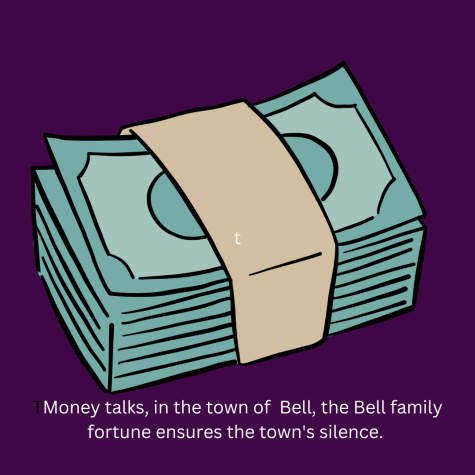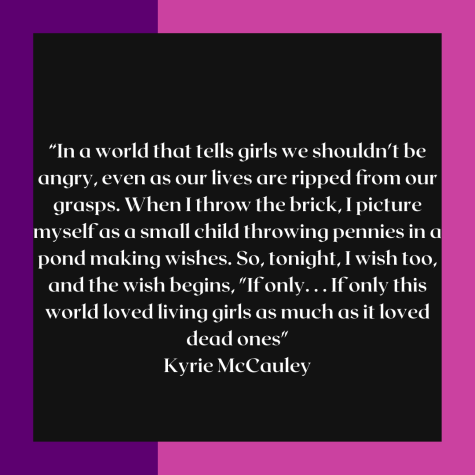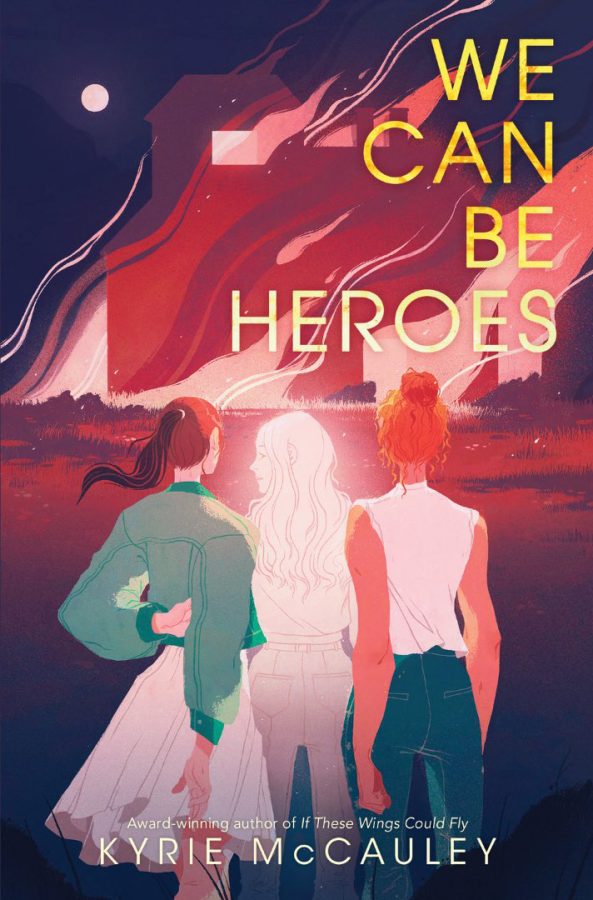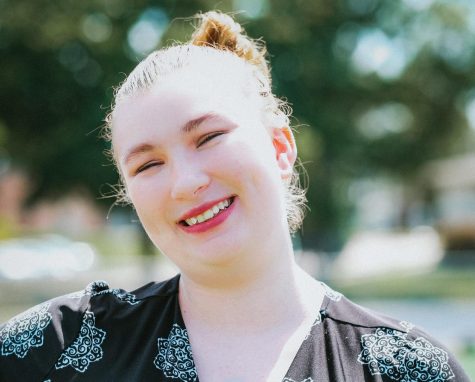Come watch a town burn, stay for revenge
As the town burns, the girls look on and find peace in the chaos. (Book cover courtesy of Katherine Tegen Books)
March 2, 2023

After a tragedy, three best friends are torn apart, two teenagers’ lives are forever changed, and a third does not live to graduate high school. This is a stunning story of grief and revenge. “We Can Be Heroes” by Kyrie McCauley, published September 2021

In the novel, Cassie, the vibrant golden girl of the town of Bell, was killed by her ex-boyfriend after a series of missed opportunities to protect her from the town’s golden boy, Nico Bell.
Nico’s father practically owns the town and continually prevents Cassie from obtaining protection from his son. Her best friends, Beck and Vivian, attempt to shield their friend from the town’s negligence. When they fail to do so, Beck, Vivian, and the ghost of Cassie choose to avenge Cassie’s death through a series of murals based on famous Greek myths and the women in them.
The town starts to slowly come to the realization that Bell and the people who helped him should be held responsible. This is helped by a podcaster named Merit who comes to town to interview those responsible for protecting Cassie – those who failed in their duties.
Generation Z will appreciate this novel, which not only showcases grief and revenge, but also tells a tale that Gen Z knows well: a school shooting, two students dead, and one injured.
The author weaves a brilliant plot line about two teenagers who take justice into their own hands. Gen Z is often faced with their own helplessness in the face of violence. This story empowers readers to fight back against the societal constructs that allow for such violence to exist.

Although the situation contained in the book is still a traumatic one, Kyrie McCauley demonstrates that beauty can come from trauma. “We Can Be Heroes” is an amazing story of female rage and empowerment that showcases how victims can be treated by the system, and how offenders with more influence can get away with murder.
The story is female-centric, specifically focused on a subject that a lot of women have been shunned for: feminine rage and victimization. The two main characters choose to respond to the town’s silence through art and myths that show the villainization of women with power. They reference five women who were essentially sacrificed in Greek mythology, or villainized. It emphasizes the damsel and villain stereotypes, and how the town both villainized Cassie and turned her into a victim.
In the end, though, the story ends happily: there is no bitter finale that leaves the reader feeling angry. The characters find out who they are and what they want out of life. There is a death, but it is peaceful, and the character is allowed to grieve.
The characters are all well-rounded and definitely pass the Bechdel test. All around, an excellent read.
This novel is so beautiful because it showcases feminine rage and is female-centric. While Cassie does not come back to life, she does get justice. Every person responsible for allowing Nico to continue to harm her is punished in some way. In the end, there is a happy ever after for the other characters, who see that life is more than revenge, and learn to accept their grief.
Feminine rage is a powerful force, and this novel allows women to be angry without silencing them.






